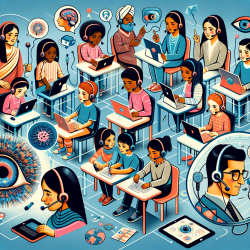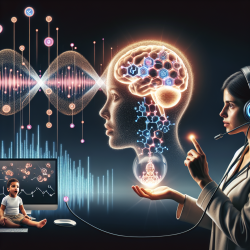Introduction
As practitioners in the field of speech-language pathology, understanding sensory processing is crucial to creating effective therapeutic interventions. Recent research on haptic roughness perception, particularly the study titled "Global surface features contribute to human haptic roughness estimations," offers valuable insights that can enhance our therapeutic approaches. This blog explores how these findings can be applied in practice, emphasizing the importance of integrating both local and global surface features in therapeutic settings.
The Study: A Brief Overview
The study conducted a series of experiments to investigate how global features, such as curved surfaces, affect human haptic roughness perception. It was found that sinusoidal-like curved surfaces with small periods were perceived to be rougher than those with large periods. Interestingly, the direction of finger movement and indirect exploration did not alter this perception, highlighting the significant role of global features in haptic roughness estimation.
Implications for Practice
Understanding the interaction between local and global features in haptic perception can significantly impact therapeutic strategies. Here are some practical applications:
- Enhanced Sensory Integration Therapy: Incorporating materials with varied global and local features can help children with sensory processing disorders improve their tactile discrimination skills.
- Customized Therapy Tools: Designing therapy tools that combine different textures and shapes can provide a more comprehensive sensory experience, aiding in the development of fine motor skills.
- Data-Driven Assessment: Utilize the findings to develop assessment tools that better capture a child's sensory processing capabilities, leading to more personalized intervention plans.
Encouraging Further Research
While the study provides a solid foundation, further research is essential to fully understand the complexities of haptic perception. Practitioners are encouraged to explore how these findings can be integrated into other sensory modalities, such as auditory and visual, to create a holistic approach to therapy.
Conclusion
By embracing the insights from this research, practitioners can enhance their therapeutic interventions, ultimately leading to better outcomes for children. The integration of global and local surface features into therapy not only enriches the sensory experience but also fosters a deeper understanding of each child's unique sensory profile.
To read the original research paper, please follow this link: Global surface features contribute to human haptic roughness estimations.










